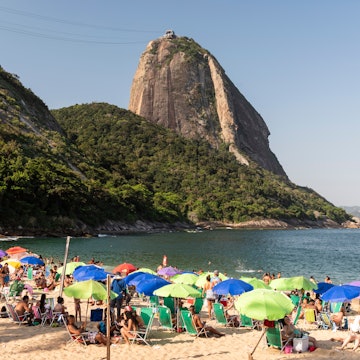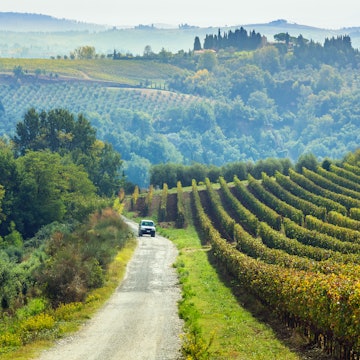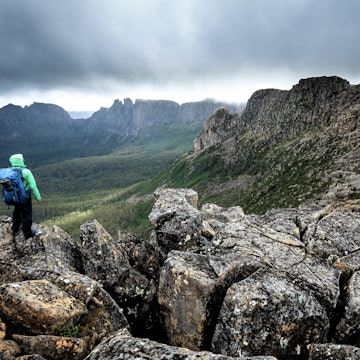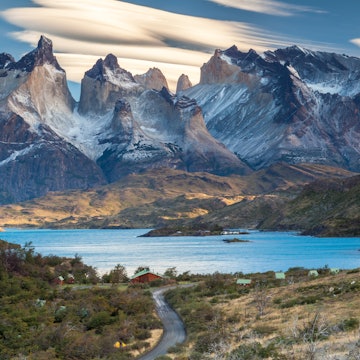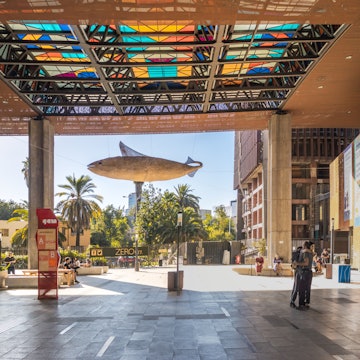
Getting around in Chile is one of South America's great adventures

Aug 20, 2023 • 8 min read

Whether you choose to move by bus, boat, train or airplane, Chile is full of highlights to enjoy © Andria Hautamaki / Getty Images
Chile may be narrow, but the distance between Punta Arenas, in the south, and Arica, in the north, is about 5000km (3100 miles). That’s about the same as the distance between New York and San Francisco. Needless to say, getting around this fascinating South American country poses some challenges.
This long and slender South American country is only 356km (221 miles) wide at its widest point, but finding transport from east to west is harder than finding transport between the north and south. Most long-distance bus routes trace the spine of the country, running north and south from the capital, Santiago.
The key thing to keep in mind is that navigating Chile takes time. Roads become increasingly rugged as you approach Chile's southern tip and boats become an essential part of the travel mix, with the reward of spectacular scenery as you navigate between the islands. Whether you choose to explore by bus, boat, train or airplane, here is the lowdown on the best ways to navigate up, down and all around Chile.

Cover long distances like a local by bus
Buses are the most popular way to get around in Chile for locals and travelers on a budget. Pullman and Turbus are the largest companies and dominate the market, with routes running all over the country. Smaller companies can often be a better bet for niche destinations, including small resort towns or surf beaches.
Recorrido is a good English-language website for comparing fares and booking without a Chilean ID number (which many other bus booking websites require). In general, buses are quite comfortable, air-conditioned and often have onboard entertainment, wi-fi and USB outlets. If it’s a long-distance bus, you can also expect an attendant to serve snacks or a light breakfast.
Unlike elsewhere in Latin America, buses generally depart at the scheduled time in Chile, though arrival times will depend on traffic conditions, particularly if you’re traveling to or from the congested capital, Santiago. Premium seats are sold as semi cama or salón cama and are usually wider, more spread out and have a deeper recline; they tend to be in a smaller downstairs section of a double-decker bus. You won’t regret spending the extra pesos on any long-haul trip.
Bus terminals are not always in the best part of town and many urban bus stations have a reputation for petty crime. If possible, travel in pairs or groups, and keep a watchful eye on your valuables and luggage. Also, be sure to confirm the arrival station – different bus companies may use different stations in larger cities, rather than every company using the same bus stand.

Explore Chile's cities by taxi
Most cities in Chile have taxi services running around downtown, and to and from airports. Prices are quite affordable by international standards. Ride-sharing apps such as Uber and Cabify work in Santiago and many regional cities, and you can use them to summon a ride.
Very few drivers speak English, so if you don't speak Spanish, apps are an easiest way to make sure you end up where you want to go. Licensed taxis can be the best way to get around after dark in large cities, to avoid the risk of petty crime.
Trains are useful for urban travel
The Santiago Metro is, by far, the best and cheapest way to get around the capital. Its sprawling network is growing rapidly, and trains will take you to most places you’d want to visit (except the airport). You can purchase a single fare or load up a "Tarjeta bip!" with cash for multiple trips on both the metro and city buses (which are now mostly electric).
No other city in Chile has a metro system, but Valparaiso and several other large cities have commuter rail networks, supplementing widespread local bus services. Trains were once a pillar of domestic travel for longer routes, but are now little used outside of Chile's Central Valley; the Empresa de los Ferrocarriles del Estado (EFE) service from Santiago to Chillán is the only route likely to appeal to visitors, though there are also occasional tourist trains from Santiago to coastal resorts or nearby wine valleys.

Bikes are great for city exploring and wilderness rides
Santiago is one of the more bike-friendly cities in Latin America, with a vast network of ciclovias (bike lanes) that you can use to get around. There are several different bike-share options; the most common is Bike Itaú. Other cities with strong bike cultures include Viña del Mar, Concepción, Temuco and Puerto Varas.
Many visitors travel to Chile for multi-day cycling trips around the scenic Lake District or down the Carretera Austral in Central Chile. Bring (or hire) a bici todo terreno (mountain bike) or touring bike with beefy tires. You also need to be ready for the climate; rain is common from Temuco south, while water can be in short supply on routes north from Santiago. Carry food and plenty of drinking water for long-distance rides.
Chilean motorists are usually courteous, but on narrow two-lane highways without shoulders, cars can be a real hazard. Ferries in Patagonia often charge a bicycle fee; you can also transport your bike by bus to avoid long rides. Most towns have bike-repair shops but carry spare inner tubes and a repair kit to be safe. Don't expect much support infrastructure in remote areas such as the Carretera Austral.

A rental car opens up lots of wild adventures in Chile
To properly explore Chile’s wildest corners, you’ll need to rent a car. Most highways and byways are well-maintained, though in rural areas in the Andes, on the Altiplano or in Northern Patagonia, roads are often unpaved and riddled with potholes. Carrying a drum of extra gas on the Altiplano is a must, while flat tires on the Carretera Austral are par for the course (always check your spare is in good condition).
Rental cars in Chile tend to be slightly more expensive than in North America or Europe, particularly if you want an automatic car; manual cars are the more common and cheaper option. Fuel costs are also at the higher end of the scale, while hefty tolls on the Pan-American Highway (and throughout Greater Santiago) can add up quickly. Some companies will accept a driving license from your home country; others ask for an International Driving Permit.
If you plan on exploring areas away from the capital, it’s best to rent a car on arrival instead of driving all the way from Santiago. Note that most rental companies don’t allow you to cross the border into Argentina, Peru or Bolivia.
Cover long distances in Chile by air
You may want to avoid flying for environmental reasons, but flights can save huge amounts of time on long-distance trips, for example from Santiago to the far south of Chile. LATAM is the principal airline in Chile, with the widest network of domestic flights and highest quality of service. Sky Airline and JetSmart are newer low-cost carriers that also cover much of the country and can have slightly cheaper fares (sometimes not much more than the price of a bus ticket for well-trafficked routes).
Be careful to read the fare details, however, as the cheapest tickets typically only include one personal item of luggage such as a small backpack. All commercial Chilean carriers have a good reputation for safety, so you can let timetables and prices determine which airline to fly with.
In general, most regional capitals in Chile have an airport, with the exception of those close to Santiago, which rely on Arturo Merino Benítez International Airport as their main hub. If you have a bit of flexibility, flying into busier hubs such as Puerto Montt (in the south) or Calama (in the north) can bring cheaper fares and more convenient flight times.

Explore Chile's southern islands by boat
Traveling in the south of Chile can often be easier – and more fun – by boat than on land. Popular ferry routes through the fjords include Puerto Montt to Puerto Natales, Puerto Yungay to Puerto Natales and Punta Arenas to Puerto Williams – all routes with amazing scenery en route. Ferries also link offshore islands such as Chiloé and the various islands of Tierra del Fuego with the mainland.
Several ferry companies in Northern Patagonia whisk travelers across the border to Argentina. Consider taking the scenic ferry route from Petrohué (near Puerto Varas) to San Carlos de Bariloche, or the adventurous route from Villa O’Higgins (at the end of the Carretera Austral) to Candelario Mancilla for onward hikes to El Chaltén.
Traveling the Carretera Austral by car requires timing your journey to match the departure times for several car ferries along the way at points such as La Arena, Hornopirén and Caleta Yungay, but fares for cars and pedestrians are reasonable.
Accessible travel in Chile
Chile does not have the best infrastructure for travelers with disabilities, but a dedicated group of activists is fighting to make the country more accessible. Access ramps are not common except in larger cities, though the law now requires new public buildings to provide disabled access. Few hotels have rooms adapted for those with impaired mobility, but lifts are common in large hotels.
The Metro in Santiago and some newer urban buses have access ramps and spaces for wheelchairs, and some street crossings have noise-indicated signals for the blind. Those in wheelchairs will find Chile's narrow and poorly maintained sidewalks awkward to negotiate.
One of the largest tour companies for travelers with disabilities, Wheel the World, is based in Chile and it runs tours up and down the country. For more information, check out Lonely Planet’s Accessible Travel Online Resources.








